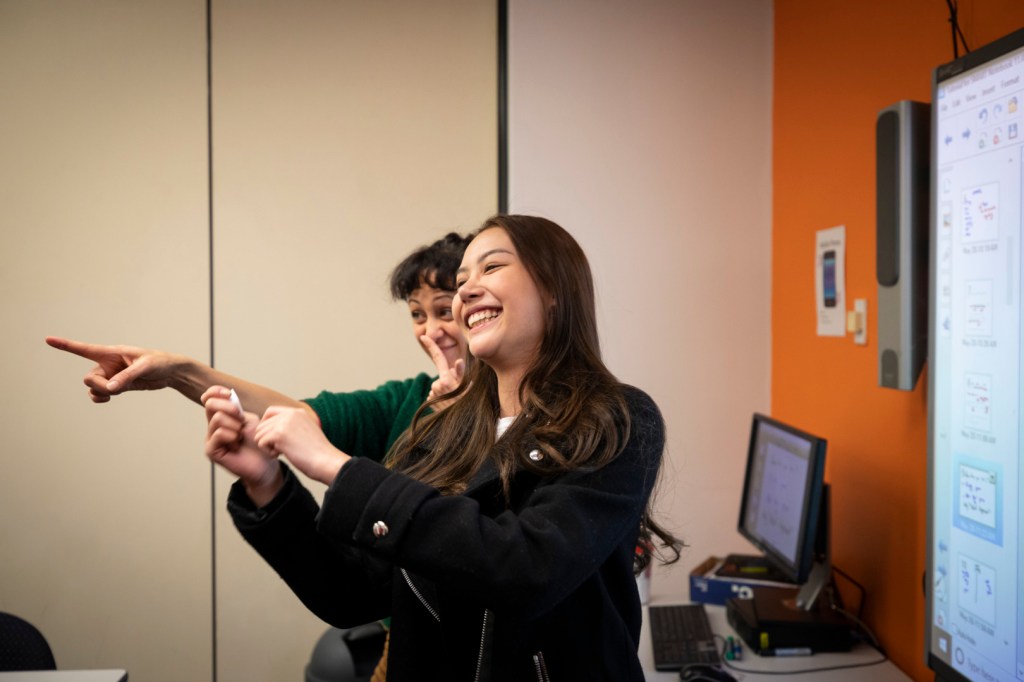
A question we are often asked by trainee teachers on the EC’s London CELTA course is how much metalanguage (language about language) to use with our learners. Will they know these linguistic terms? Will I be overloading them by telling them what they are? Is it really helpful for them? These are all questions teachers ask themselves and the answer may not always be the same, depending on who we are teaching. What we do know for sure is that human brains are naturally wired to spot patterns. This built-in ability is a huge advantage when it comes to teaching grammar, as recognising patterns in language can make learning and teaching grammar rules much more intuitive and effective without lots of linguistic terminology.
Let’s take a real-life example of language from a snippet of a conversation I had the other day. I bumped into a friend the who looked different. I said to her ‘Nita, you look great! Have you had your hair cut?’ She replied ‘Thanks. Actually, I cut it myself’.
How did Nita know that I was asking if she’d been to the hairdresser’s if I didn’t mention the hairdresser or the salon? Look at the question again and let’s look at some more examples.
Have you had your hair cut?
Their meaning and use:
In terms of meaning, all these structures tell us that someone performs the service for us. We use this structure to explain that we didn’t do it ourselves, we paid someone to do it. Can you think of more examples from service industries?
Here are a few more:
Their structure:
We can see from these examples that they all follow a clear pattern: “to have something done”, or have + object + past participle.
The verb used at the end of this structure is called the past participle (e.g. cut, fixed, taken, cleaned). This might be a familiar term for some learners as we use the past participle in other structures too, so this is often worth pointing out to help build their awareness of common patterns.

When raising learners awareness of patterns, it’s important to give them more than one example. With this particular structure, you could ask learners to think of examples of services they might pay for. To support them, you could give pictures of various services (e.g. hairdressers / mechanics).
Once you have a number of examples using the same structure, ask learners to examine them and find the common pattern. Doing these activities in pairs can help as learners begin to bounce ideas off each other and together they find the meaning and patterns.
Next it’s all about consolidating the pattern by getting learners to use it. We can get them to ask each other questions and encourage conversations:
When was the last time you…
This repetition can be incredibly useful for learners. It helps to reinforce the pattern making it easier for them to recognise and use.
The final step is to send them out into the world to try to find examples of it in use. By sending them on a pattern-hunt, we encourage them to notice other patterns and structures.

Some learners will want to know the grammar terminology and that can also give them more autonomy when it comes to studying outside of the classroom. Not all learners will need or want this and so you can keep it useful by focusing on a recognisable pattern that everyone can see. Nevertheless, doing your research before a lesson can help you be prepared and become more confident with terminology bit by bit.
The structure we have been looking at here is known as the causative passive construction. Want to deepen your knowledge of grammar and how to teach it? Find out more about learning to teach with EC’s CELTA and DELTA courses. We offer online, face-to-face, and blended options at EC London and EC Toronto. You can also read what previous participants have said about our courses [here].
Live online English classes for continuous learning.
Did you like this article? Share it!